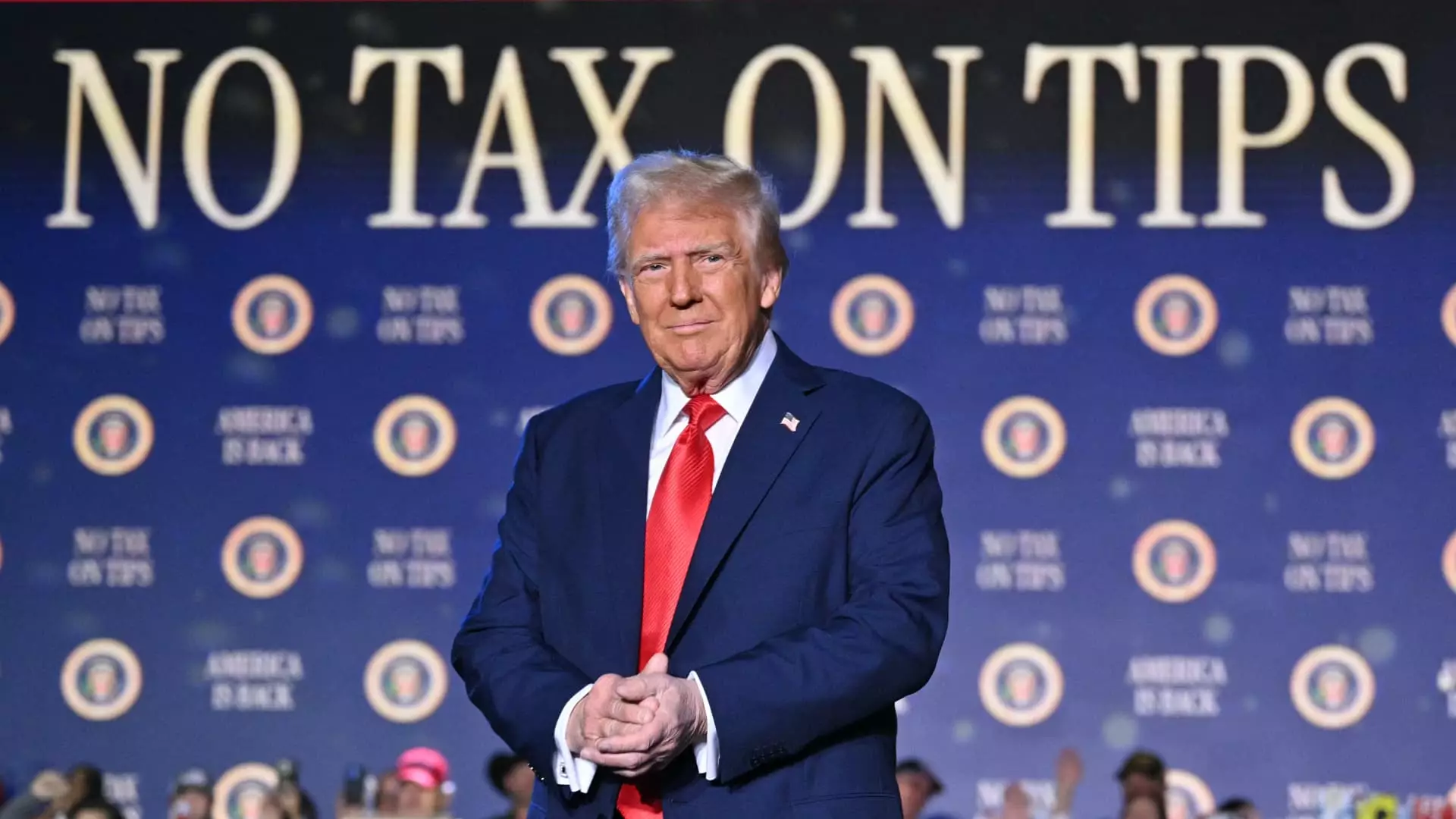In his latest legislative effort, President Donald Trump unveiled what he dubbed the “big beautiful bill,” introducing changes meant to offer tangible relief to working Americans. Among these reforms is a provision commonly referred to as the “no tax on tips” benefit. On the surface, it sounds like a victory for everyday workers—those who depend heavily on tips for their livelihood. However, a closer analysis reveals that this measure is more of an illusion than an actual win, cloaked in ambiguity and riddled with limitations that undermine consumer and worker protections simultaneously.
The legislation, designed to be effective from 2025 through 2028, offers a tax deduction of up to $25,000 for qualified tips. Yet it is a far cry from eliminating taxes on tips; instead, the deductible amount simply reduces taxable income, leaving workers still subject to payroll taxes and state levies. This loophole raises critical questions about the sincerity of the effort—does this measure genuinely benefit tipped workers, or is it a calculated move to give the appearance of support while maintaining the status quo? Because the deduction phases out based on income levels exceeding $150,000, it clearly favors higher-income earners, essentially neglecting the most vulnerable workers in the service industry.
Furthermore, the legislation creates a murky landscape around eligibility. Many workers—particularly those in gig economies like Uber and Lyft—must grapple with complex IRS reporting thresholds, such as the $20,000 and 200 transactions stipulation for Form 1099-K. This threshold is so high that many small tips go unreported, which defeats the purpose of simplifying tax relief for low-income workers. Moreover, the legislation explicitly excludes certain professions, like actors and musicians, which, although a necessary limitation given their income structures, also highlights how narrow and selective this supposed benefit truly is. It is a case of lip service rather than meaningful reform, as most tipped workers are left still navigating an opaque and incomplete tax system.
The Ambiguous Definition of “Voluntary” and Its Practical Consequences
The success of this tax break hinges on defining what qualifies as a “qualified tip.” The law specifies that the tip must be voluntary and directly determined by the customer, which casts doubt over the inclusion of mandatory service charges or automatic gratuities. This vague language opens a Pandora’s box of potential loopholes, allowing establishments to circumvent the intended protections. For instance, restaurants often add automatic gratuities for large groups, but are these truly voluntary? Many workers and advocates argue that mandatory charges are an inherent part of their income, but under this legislation, they risk being excluded from benefiting from the deduction altogether.
This ambiguity is problematic because it grants employers and lawmakers considerable discretion in interpreting rules, thereby rendering the measure inconsistent and unpredictable. Financial planners and tax experts have voiced concerns about the difficulty of applying such a law uniformly, especially since many tips remain unreported or underreported. Workers in cash-based environments frequently fail to report all their tips, and the legislation’s reliance on proper reporting via forms like W-2 or 1099 adds another layer of complexity without addressing underlying non-disclosure issues.
The legislation’s focus on reporting thresholds, designed to prevent tax abuses, inadvertently marginalizes low-income workers who often do not meet these thresholds or lack formal reporting mechanisms. For gig economy workers, reporting becomes even more convoluted with fluctuating thresholds each year, creating a complex maze that offers little real relief for those who need it most.
The Deceptive Nature of Promised Relief and Broader Implications
This law’s real intention appears to serve political optics more than substantive support. By touting a “no tax on tips,” the government sidesteps addressing the root issues—such as wage theft, unreported income, and systemic inequality in service industries. Instead, it offers a thin veneer of generosity that fails to confront the realities of tipping culture, where millions of dollars are often legally or illegally hidden from tax authorities.
Moreover, the legislation subtly shifts the focus away from raising wages or implementing fair labor standards, preferring instead to tweak the tax code in a way that benefits a select few—primarily higher-income earners and those already equipped to navigate complex reporting systems. Consequently, the majority of tipped workers, many of whom rely on cash tips and informal arrangements, remain marginalized, with little tangible benefit.
This creates a false sense of progress—a narrative spun to placate constituents without challenging the structural inequities that perpetuate economic hardship in the service sector. It also fosters a dangerous misconception among workers that the system is supportive when, in reality, it is intricately designed to maintain existing power dynamics. By depleting the focus on wage reforms and worker protections, this legislation exemplifies how political calculations often override meaningful progress, leaving the most vulnerable to fend for themselves in an increasingly complex tax landscape.

